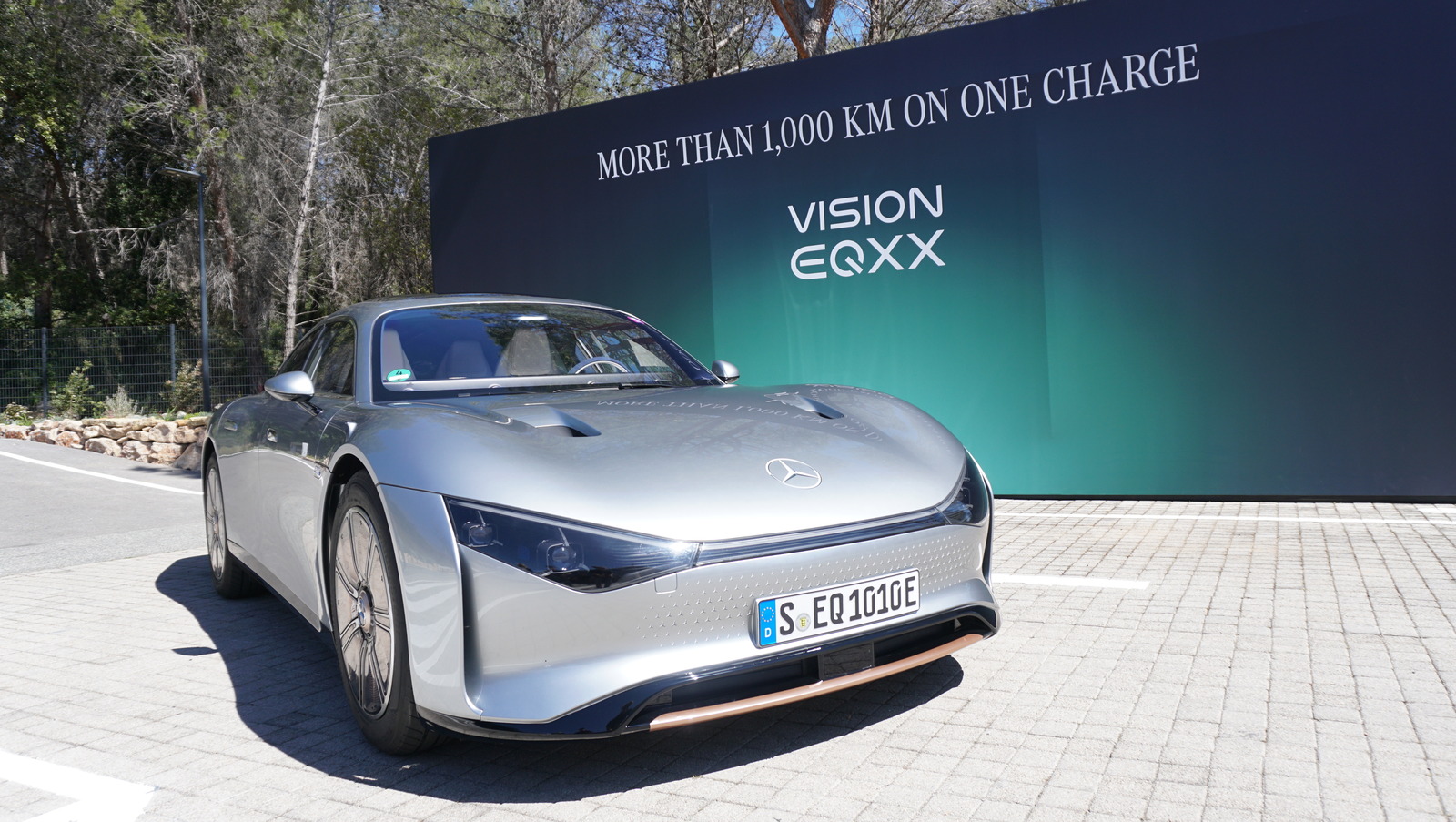On April 5, 2022, Mercedes-Benz traveled a way in the vision of the EQXX Electric “Research” Car from the new electrical software hub in Sindelfingen, Germany, to Cassis, France – all without charging a 100 kW sedan battery. . Winding through the Swiss Alps in rainy weather and cold weather, and down through Italy before reaching its goal, the trip only takes more than 12 hours, including two 15-minute breaks to replace the driver. 1,008 km (626 miles) up with one charge verified by the International Accredited Certification Institute Tüv Süd.
Five days later, we were part of the first small group of people outside Mercedes-Benz to ride EQXX vision. It was a “co-drive” half hour short (where we didn’t drive) through the beautiful Côte d’Azur area throughout France. However, it is a long enough sensory experience to soak in several experimental car innovations, with which Mercedes-Benz plans to produce more of the conceptual impact.
Innovation lab on wheels
While many people refer to the EQXX vision as a concept car, the people did not work in Mercedes-Benz. The company insisted on calling a research vehicle, because the concentrated experimental project from many fields of research into a single, practical EV for the purpose of testing the results in the real world scenario. During vision of EQXX technology on our co-drive day, Jasmin Eichler, future technology director for Mercedes-Benz AG, said the best of these lessons will be used in all Mercedes series vehicles.
Eichler said the travel point of 1,000 km of this vision is not only to complete the drive with a power filling. For this reason, he said, they could put a lot of extra batteries on the roof to extend its reach. Instead, Mercedes-Benz departs to create the most efficient eV by uniting research innovation in electrical powertrain, batteries, aerodynamics, light body construction, infotainment and computing, and sustainable interior material.
When Mercedes-Benz revealed EQXX’s vision in January, the car had been developed for 18 months at the time, and Eichler said they were not sure it would finish a 1,000 km trip with one fee. Since then, the team removes 88 pounds from the car, carrying the weight of his opinion to 3,869 pounds. In the end, at the time of the EQXX vision arrived at the Cassis after 1,008 km, the battery was 15% charged, potentially allowing 140 km (87 miles) ranges. It averaged only 8.7 kW driven 100 km.
Engineering for endurance
Developed together with the Mercedes-AMG Petronas F1 team, the Electric Vision EQXX drive unit reaches 180 kW peak output from a single rear axle motor. According to Eva Greiner, Chief Engineer, the electric drive system for Mercedes-Benz AG, EQXX drivetrain vision is 95% efficient, meaning 95% of battery energy reaches the wheel. He said the efficiency of electric drives averaged around 90%, so the EQXX vision reduces energy losses with a 50% discount on average. Because efficient drive units produce a slightly wasted heat, engineers can cool them using only passive cooling, and which saves further energy by avoiding liquid cooling.

